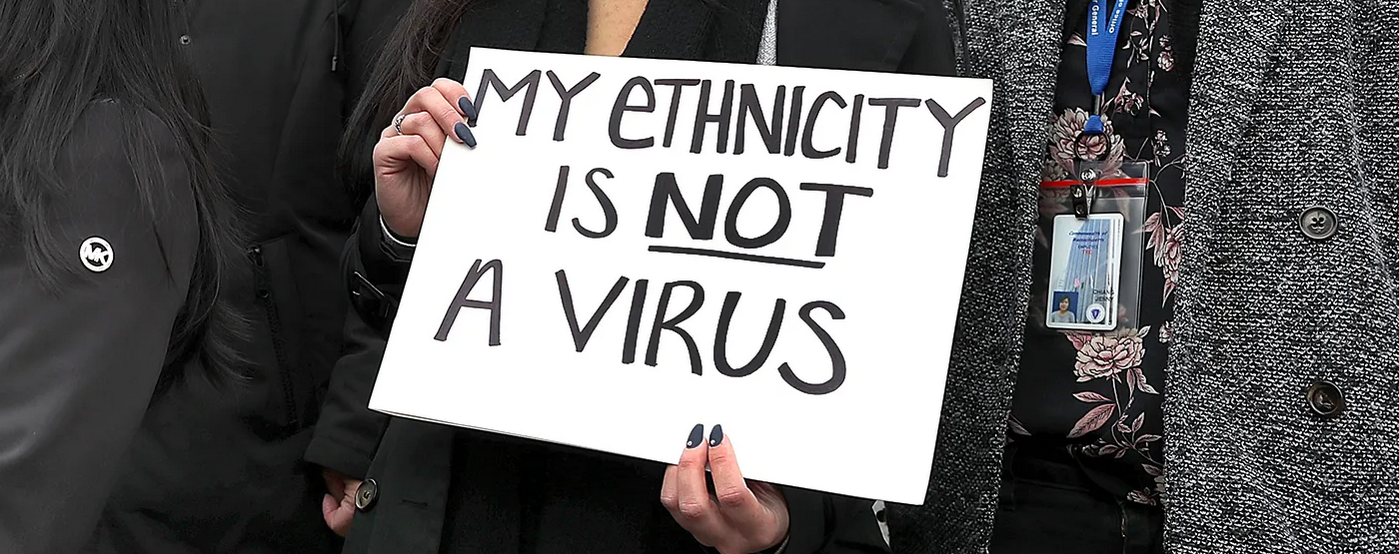With the COVID-19 virus having originated in China, Asian-Americans have seen a noticeable uptick in hate crimes directed towards them. Photo from teenvogue.com.
According to recent reports from the New York Times, the COVID-19 pandemic has, in part, led to an increase in hate crimes against Asian Americans across the country.
This has partially been a result of negative rhetoric from some prominent figures that have blamed China for COVID-19, referring to it as “Kung Flu” and the “China Virus.”
At this week’s University of Rhode Island Asian Student Association (ASA) meeting, Daravuh Tep, ASA’s events coordinator, and Brian Li, ASA’s public relations coordinator, gave a presentation about this.
The presentation included a video of Asian Americans describing racist actions that they have experienced during the pandemic.
Meetings are usually focused on facilitating interaction between Asian students, but it took a more serious tone while they discussed the issue of hate crimes that are currently plaguing the Asian community.
This is not a new problem though. As far back as the Chinese Exclusion Act of 1882, which prohibited the immigration of Chinese workers, there have been laws aimed at Asian immigrants and Asian Americans.
A strong anti-immigrant sentiment from some right-wing figures has led to an increase of hate crimes against Asians in recent months, with hate crimes against Asian Americans increasing 150 percent according to a new study from the Center for the Study of Hate and Extremism at California State University.
The group said that calling the police concerning these hate crimes was not the best solution, as this could put the perpetrator at risk as well. They pointed to a recent example of a hate crime, where an African-American man attacked an Asian man. They said the possibility of police brutality occurring as a result of calling the police was high.
“The better way to stop hate crimes in the Asian community is just speaking out, teaching more people about it, stop going with over-generalizations and stereotypes and coming together as a whole community,” Tep said.
They emphasized that the struggle of Asian Americans is nowhere close to the same as the struggle of African Americans and to compare the struggles of any two races would be counterproductive, continuing prejudices against both communities.
ASA President Emeritus Tomaii Sek described the racism he has experienced recently. While he was in his hometown of North Attleboro, Massachusetts on his way to the store, an older man started yelling racial slurs at him. He said that before this, he had never experienced that type of racism in his hometown.
“I’m comfortable enough with myself to kind of shake it off, but my sister or my dad or my mom or my grandma or something was with me,” Sek said.
Sek said that he believed the older man said these slurs because of sentiments furthered during the pandemic. Other students said that they have also experienced racism in their hometowns that they had never experienced before.
Cody Chin, president of the ASA, said that while he has not experienced much overt racism, but he, like many others, has experienced more microaggressions and side glances during the pandemic.
While the ASA does not expect things to change overnight, they hope educating people can help build bridges and stop the spread of racism.
“It’s sad how much of it is closer to you than you expect,” Chin said.

